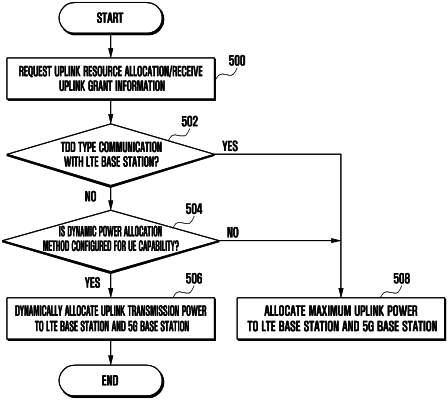| CPC H04W 52/146 (2013.01) [H04W 52/36 (2013.01); H04W 76/15 (2018.02); H04W 88/06 (2013.01)] | 20 Claims |

|
1. An electronic device comprising:
at least one processor operatively connected to a wireless communication system, wherein the at least one processor is configured to:
establish, via the wireless communication system, a first radio connection with a first node of a first cellular network and a second radio connection with a second node of a second cellular network,
identify a first uplink power value to transmit data to the first node via the first radio connection,
determine whether to use of a dynamic power allocation method based on the first uplink power value and an uplink maximum power value associated with the electronic device,
in case that the at least one processor determines to use of the dynamic power allocation method, control transmitting data to at least one of the first node or the second node via the wireless communication system based on a first power allocation method corresponding to the dynamic power allocation method, and
in case that the at least one processor determines not to use of the dynamic power allocation method, control transmitting the data to the first node or the second node via the wireless communication system based on a second power allocation method different than the first power allocation method.
|